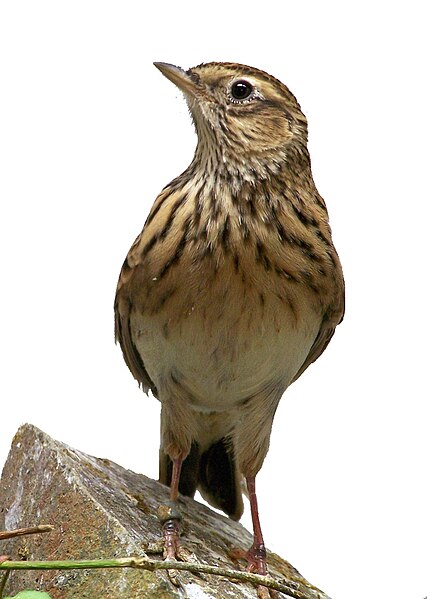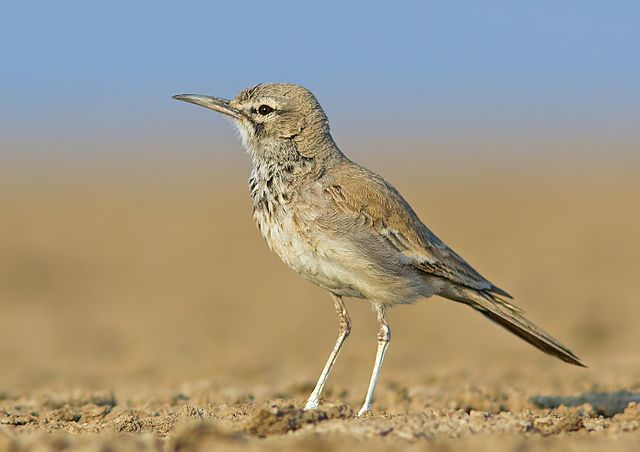Thekla's lark, also known as the Thekla lark, is a species of lark that breeds on the Iberian Peninsula, in northern Africa, and sub-Saharan Africa from Senegal to Somalia. It is a sedentary (non-migratory) species. This is a common bird of dry open country, often at some altitude. Thekla's lark was named by Alfred Edmund Brehm in 1857 for his recently deceased sister Thekla Brehm (1833–1857). The name is a modern Greek one, Θέκλα, which comes from ancient Greek Θεόκλεια (Theokleia) derived from θεός and κλέος. The population is declining in Spain, but this is a common bird with a very wide range and the International Union for Conservation of Nature has rated its conservation status as being of "least concern".
Thekla's lark
G. t. theklae in hills near Loja, Granada, Spain
G. t. ruficolor Souss-Massa National Park, Morocco
Eggs of Galerida theklae MHNT
Larks are passerine birds of the family Alaudidae. Larks have a cosmopolitan distribution with the largest number of species occurring in Africa. Only a single species, the horned lark, occurs in North America, and only Horsfield's bush lark occurs in Australia. Habitats vary widely, but many species live in dry regions. When the word "lark" is used without specification, it often refers to the Eurasian skylark (Alauda arvensis).
Lark
Image: Greater Hoopoe Lark Kutch, crop
Image: Spike heeled lark 2018 03 10 13 20 38 3271
Image: Gray's lark 4770 Flickr Ragnhild & Neil Crawford








